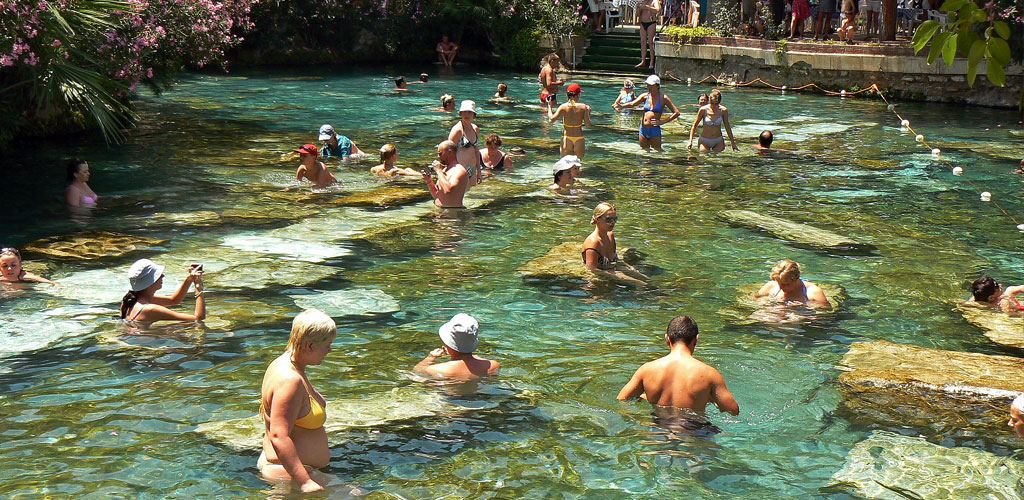Pamukkale
Thermal
Pools!
Pamukkale Turkey UNESCO World Heritage
Welcome to Pamukkale Turkey, one of the world's most extraordinary natural wonders and a UNESCO World Heritage Site that has captivated visitors since Roman times! Experience the breathtaking calcium-rich thermal pools cascading down brilliant white travertine terraces in Turkey's most iconic destination. Discover healing waters, Roman history, and the magnificent Hierapolis ancient city all in one spectacular location.
Pamukkale Turkey offers an unparalleled combination of natural beauty and historical significance. Soak in therapeutic thermal pools while exploring 2,000 years of Turkish heritage, from ancient Roman spa traditions to modern wellness tourism. This remarkable destination represents the perfect blend of Turkey's natural wonders and cultural treasures.
- History
- 2025 Entrance Fees & Pricing
- 📅 2026 Events & Festivals Calendar
- Complete Thermal Pools Guide
- Complete Thermal Spa Experience Guide
- Complete Cultural Heritage Guide
- Complete Visitor Planning Guide
- Turkey Regional Tourism Guide
- Luxury Turkey Tours Ultimate Guide
- Ultra-Luxury Thermal Spa Experiences
- Private Jet Charter Guide
- Nearby Hotels
- Other Hot Springs

Turkey Tourism & Local Culture
Pamukkale Turkey offers more than just thermal pools - discover authentic Turkish culture through local markets, traditional crafts, and regional specialties. The neighboring streets are packed with charming shops, roadside stalls, and vendors offering genuine Turkish fashion, handcrafted trinkets, and unique souvenirs.
Experience authentic Turkey through genuine Pamukkale cotton products and locally carved Onyx stone - traditional Turkish crafts that make perfect mementos of your Turkish thermal pools adventure!




